
Infiniti Q50 Saloon (2014-2020) engines, drive and performance
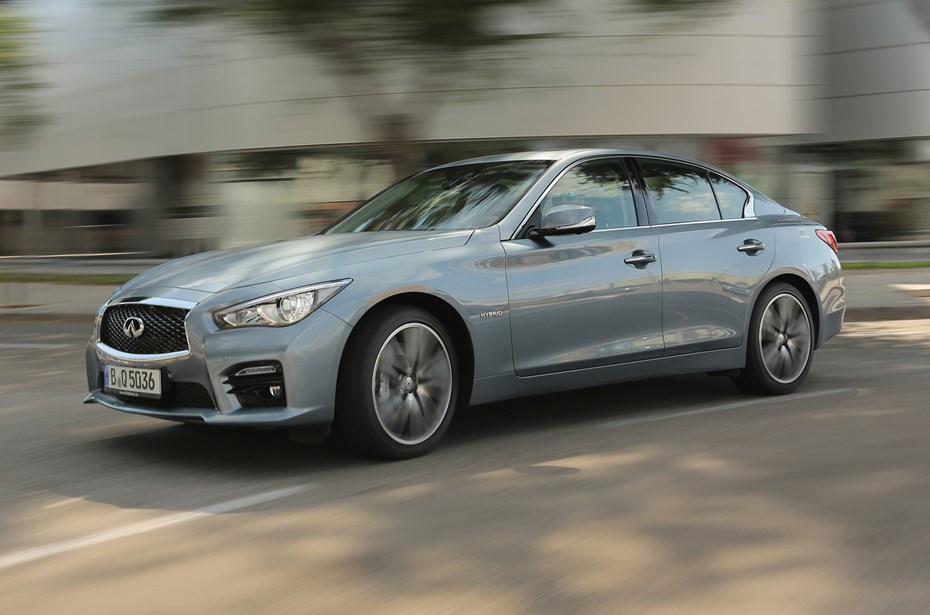
A quick look at the spec sheets suggests that Infiniti Q50 performance is strong enough to worry its rivals; the quickest in the line up and can sprint from 0-62mph in only 5.1 seconds.
Petrol engines
There’s only one petrol engine available, and it’s mated to a battery pack. This hybrid unit uses what Infiniti has termed its Direct Response technology, claiming it’s the ‘new turbocharger’. In reality it’s a boost of power from the electric motor.
Combined with the 3.5-litre V6 petrol engine the total output is rated at 359bhp, and more importantly 546Nm of torque. Over 270Nm of that latter figure is available from the off, thanks to the electric unit, and maximum acceleration feels pleasantly brisk whatever your current road speed.
If only it sounded more tuneful from the driver’s seat, where it can occasionally sound a little strained at high revs – it’s much quieter and feels far more refined when you’re driving at a more sensible pace.
Diesel engines
Again there’s no choice here; there’s only the one diesel engine available, a 2.2-litre unit that’s actually based on a Mercedes Benz engine, even if Infiniti is billing it as its first four-cylinder diesel engine. There are some bespoke Infiniti parts fitted to it admittedly, and we’d wager it’ll prove particularly reliable.
Unfortunately while we think it’ll be reliable, we also feel it’s off the pace in terms of performance, despite the official figures suggesting that the car will cover the 0-62mph benchmark in 8.7 seconds with the manual gearbox.
We didn’t have the chance to sample this six-speed ‘box, but did try the seven-speed automatic instead – the good news being it allows the car to complete the same test two tenths of a second quicker. Unless you opt for the Sport model then you’ll make do without the steering wheel paddles to manually control the gearbox when the occasion arises though.
In isolation the engine’s refinement is perfectly adequate, but it’s certainly not a highlight – and anyone who has driven a new BMW 2.0-litre diesel will be surprised at how vocal this car becomes as the revs increase.
Not the highlight it should be; there’s lots of chassis options with the Q50, first of all boiling down to your choice of rear- or four-wheel drive, though the diesel is only available with the former.
Next on the list of possible boxes to be ticked is the Direct Adaptive Steering (DAS), an electronic fly-by wire steering system that controls the front wheels via digital signals rather than a mechanical link. It’s a world first, for now at least. There is actually still a mechanical connection for failsafe safety reasons, but this is disconnected on the move.
The benefits are many on paper; response to steering input is faster than with a mechanical system, there’s no unwanted kick-back through the wheel over bumps and the weight through the steering wheel can be more easily adjusted. However apart from keeping the car pointing dead ahead on the motorway, where the instant response from dead centre is ideal, it seems everything else is lost in translation.
Drive the car at five tenths and the problems aren’t so apparent, though you’ll still notice the occasional change to the weighting and response of the wheel in relation to the front tyres. We weren’t the only ones to have the steering feel it had turned itself ‘off’ for a moment either.
Increase your speed and it unravels further, and as the safety systems begin to reign in any slight slip detected from the wheels the system becomes even more confused, fighting against your inputs with even more frequent changes to the weighting.
With the Active Trace system engaged, which brakes individual wheels to trim the cars trajectory to your desired line, we found our four-wheel drive hybrid model would wash wide at the front and the next bend slinging its tail out instead. It was lacking any consitency.
It’s an exhausting car to drive like this, there’s no enjoyment to be gained from it and overall the car doesn’t inspire any confidence. If it managed to thread itself through every other manoeuvre with more precision it wouldn’t be so bad, but it still feels strangely disconnected at any speed and from behind the wheel the Q50 is little else but a dynamic disappointment.


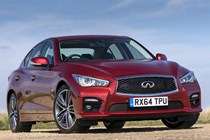

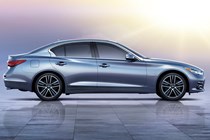
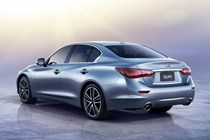
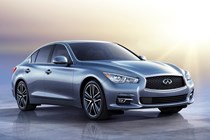
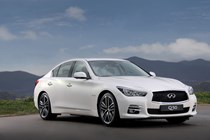


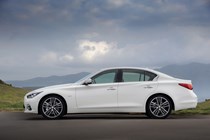
.jpg)
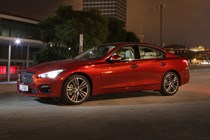
.jpg)
.jpg)
.jpg)
.jpg)
.jpg)
.jpg)
.jpg)
.jpg)
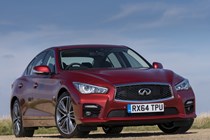
.jpg)

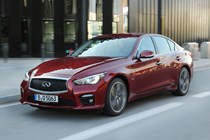
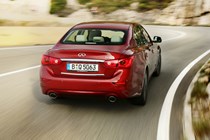
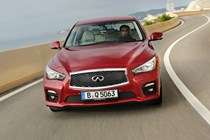
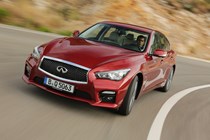
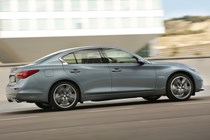
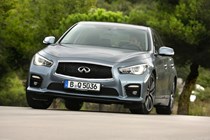
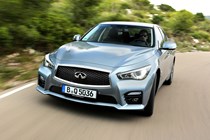
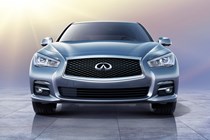
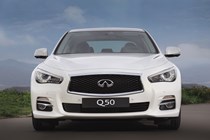
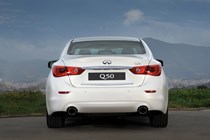
.jpg)
.jpg)
.jpg)
.jpg)
.jpg)
.jpg)
.jpg)
.jpg)
.jpg)
.jpg)
.jpg)
.jpg)
.jpg)
.jpg)
.jpg)
.jpg)
.jpg)
.jpg)
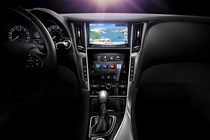
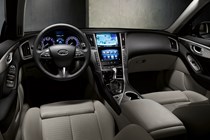
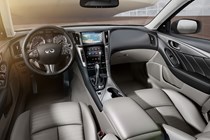
.jpg)
.jpg)
.jpg)
.jpg)
.jpg)
.jpg)
.jpg)
.jpg)
.jpg)
.jpg)
.jpg)
.jpg)
.jpg)
.jpg)
.jpg)
.jpg)
.jpg)
.jpg)
.jpg)
.jpg)
.jpg)
.jpg)
.jpg)
.jpg)
.jpg)
.jpg)
.jpg)
.jpg)
.jpg)
.jpg)
.jpg)
.jpg)









.jpg?quality=50)

.jpg?quality=50)
.jpg?quality=50)
.jpg?quality=50)
.jpg?quality=50)
.jpg?quality=50)
.jpg?quality=50)
.jpg?quality=50)
.jpg?quality=50)

.jpg?quality=50)











.jpg?quality=50)
.jpg?quality=50)
.jpg?quality=50)
.jpg?quality=50)
.jpg?quality=50)
.jpg?quality=50)
.jpg?quality=50)
.jpg?quality=50)
.jpg?quality=50)
.jpg?quality=50)
.jpg?quality=50)
.jpg?quality=50)
.jpg?quality=50)
.jpg?quality=50)
.jpg?quality=50)
.jpg?quality=50)
.jpg?quality=50)
.jpg?quality=50)



.jpg?quality=50)
.jpg?quality=50)
.jpg?quality=50)
.jpg?quality=50)
.jpg?quality=50)
.jpg?quality=50)
.jpg?quality=50)
.jpg?quality=50)
.jpg?quality=50)
.jpg?quality=50)
.jpg?quality=50)
.jpg?quality=50)
.jpg?quality=50)
.jpg?quality=50)
.jpg?quality=50)
.jpg?quality=50)
.jpg?quality=50)
.jpg?quality=50)
.jpg?quality=50)
.jpg?quality=50)
.jpg?quality=50)
.jpg?quality=50)
.jpg?quality=50)
.jpg?quality=50)
.jpg?quality=50)
.jpg?quality=50)
.jpg?quality=50)
.jpg?quality=50)
.jpg?quality=50)
.jpg?quality=50)
.jpg?quality=50)
.jpg?quality=50)